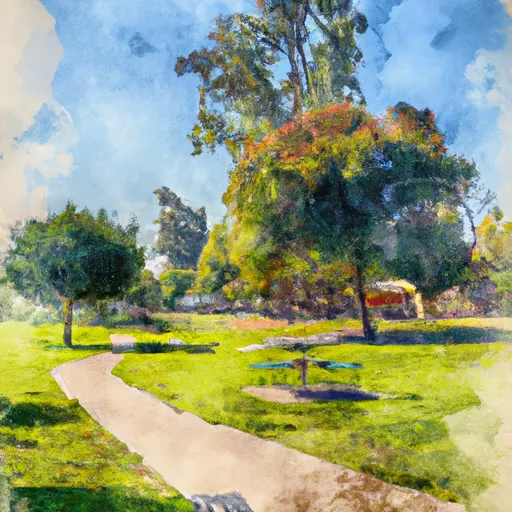Stone Lakes National Wildlife Refuge
Rate this placeLast Updated: December 29, 2025
Stone Lakes National Wildlife Refuge is located in Sacramento County, California, and serves as an essential habitat for migratory birds and native wildlife.
°F
°F
mph
Wind
%
Humidity
Summary
This 4,000-acre refuge offers visitors a chance to explore and appreciate the diverse ecosystems of wetlands, grasslands, and riparian forests. Here are some reasons to visit, points of interest to see, interesting facts, and the best time of year to visit, as verified across multiple independent sources:
Reasons to Visit:
1. Birdwatching: Stone Lakes Refuge is a paradise for bird enthusiasts, as it hosts over 200 species of migratory birds, including sandhill cranes, ducks, geese, and shorebirds. It is a designated Important Bird Area.
2. Wildlife Viewing: Visitors have the opportunity to spot a wide variety of wildlife, including river otters, beavers, coyotes, raccoons, rabbits, and more.
3. Hiking and Trails: The refuge offers several trails, such as the Lost Slough Wetlands Walk and the Bruceville Road Trail, providing an excellent opportunity for outdoor activities like hiking, photography, and nature observation.
4. Environmental Education: Stone Lakes Refuge provides educational programs and guided tours for visitors of all ages, allowing them to learn about the importance of wetlands, conservation efforts, and the natural history of the area.
Points of Interest:
1. Sandhill Crane Wetland: This area provides a crucial wintering habitat for thousands of sandhill cranes. Visitors can observe these majestic birds during their annual migration.
2. Cosumnes River Preserve: Located adjacent to Stone Lakes Refuge, this preserve offers additional trails, birdwatching opportunities, and educational programs.
3. Boardwalks and Observation Decks: Stone Lakes Refuge features several boardwalks and observation decks that allow visitors to view wildlife up close and enjoy scenic views of the wetlands.
Interesting Facts:
1. Stone Lakes National Wildlife Refuge is one of the few remaining wetlands in California's Central Valley, a region that has lost over 95% of its original wetlands.
2. The refuge was established in 1992 as mitigation for habitat lost due to development in the Sacramento area.
3. The refuge is managed by the U.S. Fish and Wildlife Service and is part of the larger Sacramento National Wildlife Refuge Complex.
Best Time of Year to Visit:
The best time to visit Stone Lakes Refuge is during the fall and winter months (October to February). This period coincides with the migration of thousands of waterfowl and sandhill cranes, making it the ideal time for birdwatching. Spring (March to May) is also a good time to visit, as the wetlands come alive with blooming wildflowers and nesting activity.
Please note that it is always recommended to check with official sources and visitor centers for the most up-to-date information regarding visiting Stone Lakes National Wildlife Refuge.
Weather Forecast
Park & Land Designation Reference
Large protected natural areas managed by the federal government to preserve significant landscapes, ecosystems, and cultural resources; recreation is allowed but conservation is the priority.
State Park
Public natural or recreational areas managed by a state government, typically smaller than national parks and focused on regional natural features, recreation, and education.
Local Park
Community-level parks managed by cities or counties, emphasizing recreation, playgrounds, sports, and green space close to populated areas.
Wilderness Area
The highest level of land protection in the U.S.; designated areas where nature is left essentially untouched, with no roads, structures, or motorized access permitted.
National Recreation Area
Areas set aside primarily for outdoor recreation (boating, hiking, fishing), often around reservoirs, rivers, or scenic landscapes; may allow more development.
National Conservation Area (BLM)
BLM-managed areas with special ecological, cultural, or scientific value; more protection than typical BLM land but less strict than Wilderness Areas.
State Forest
State-managed forests focused on habitat, watershed, recreation, and sustainable timber harvest.
National Forest
Federally managed lands focused on multiple use—recreation, wildlife habitat, watershed protection, and resource extraction (like timber)—unlike the stricter protections of national parks.
Wilderness
A protected area set aside to conserve specific resources—such as wildlife, habitats, or scientific features—with regulations varying widely depending on the managing agency and purpose.
Bureau of Land Management (BLM) Land
Vast federal lands managed for mixed use—recreation, grazing, mining, conservation—with fewer restrictions than national parks or forests.
Related References

 Clarksburg Boat Launch
Clarksburg Boat Launch
 Chuck Tyson Memorial Park
Chuck Tyson Memorial Park
 Dr. Paul Barnes Community Park
Dr. Paul Barnes Community Park
 Stephenson Family Park
Stephenson Family Park
 Backer Park
Backer Park